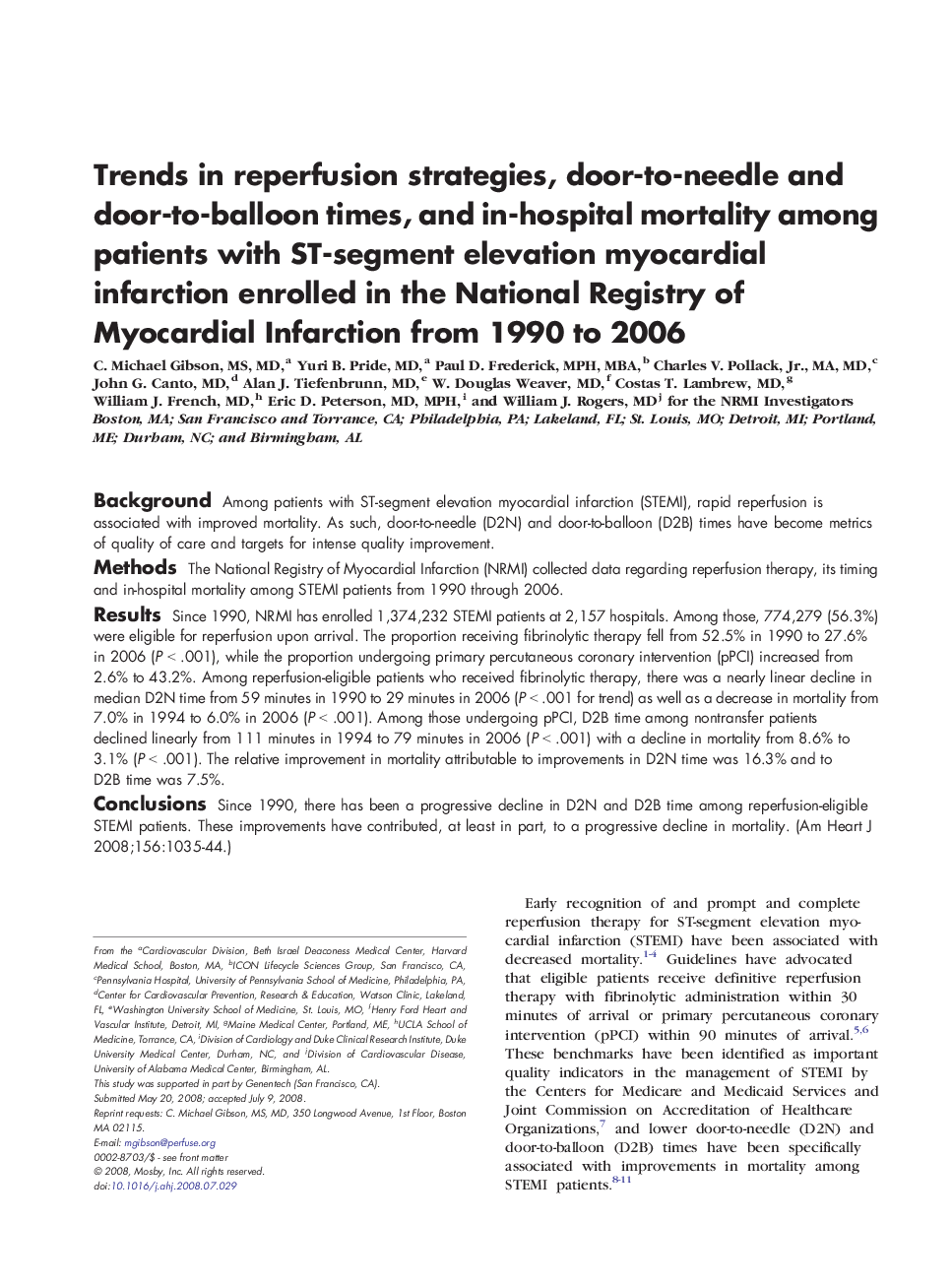| کد مقاله | کد نشریه | سال انتشار | مقاله انگلیسی | نسخه تمام متن |
|---|---|---|---|---|
| 2849816 | 1167729 | 2008 | 10 صفحه PDF | دانلود رایگان |

BackgroundAmong patients with ST-segment elevation myocardial infarction (STEMI), rapid reperfusion is associated with improved mortality. As such, door-to-needle (D2N) and door-to-balloon (D2B) times have become metrics of quality of care and targets for intense quality improvement.MethodsThe National Registry of Myocardial Infarction (NRMI) collected data regarding reperfusion therapy, its timing and in-hospital mortality among STEMI patients from 1990 through 2006.ResultsSince 1990, NRMI has enrolled 1,374,232 STEMI patients at 2,157 hospitals. Among those, 774,279 (56.3%) were eligible for reperfusion upon arrival. The proportion receiving fibrinolytic therapy fell from 52.5% in 1990 to 27.6% in 2006 (P < .001), while the proportion undergoing primary percutaneous coronary intervention (pPCI) increased from 2.6% to 43.2%. Among reperfusion-eligible patients who received fibrinolytic therapy, there was a nearly linear decline in median D2N time from 59 minutes in 1990 to 29 minutes in 2006 (P < .001 for trend) as well as a decrease in mortality from 7.0% in 1994 to 6.0% in 2006 (P < .001). Among those undergoing pPCI, D2B time among nontransfer patients declined linearly from 111 minutes in 1994 to 79 minutes in 2006 (P < .001) with a decline in mortality from 8.6% to 3.1% (P < .001). The relative improvement in mortality attributable to improvements in D2N time was 16.3% and to D2B time was 7.5%.ConclusionsSince 1990, there has been a progressive decline in D2N and D2B time among reperfusion-eligible STEMI patients. These improvements have contributed, at least in part, to a progressive decline in mortality.
Journal: American Heart Journal - Volume 156, Issue 6, December 2008, Pages 1035–1044